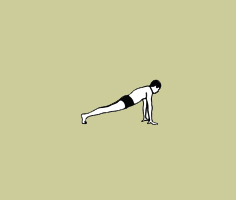About Hatha Yoga
What Is Hatha Yoga?
Hatha Yoga is bringing greater health and well-being to millions of practitioners around the world today. In recent times, it has become especially synonymous with asana (yoga posture) practice. Hatha Yoga also includes:
- pranayama (breathing practices)
- bandha and mudra (energy locks and seals),
- kriya (cleansing practices),
- dhyana (meditation,)
- deep relaxation/Yoga nidra (“sleep”)
- Yogic dietary and other lifestyle guidelines
All these practices are tools invaluable for this age, promoting physical vitality and mental positivity and composure. They remind us that whilst modern day Hatha Yoga might look like a practice for muscles and ligaments which seems to also leave us feeling mentally refreshed and de-stressed, it is in essence a pranic practice. That is, it’s power lies in it’s effect on our prana (life-force). Structured with the correct understanding of practices and practitioners (age, gender, lifestyle, health), These Hatha Yoga practices can harmonise the flow of prana within us, expand it, and give our nervous systems the strength and steadiness to contain a greater flow of prana.
In LoveYogaHealing Hatha Yoga classes and workshops, we embrace all the Hatha Yoga practices listed above. LoveYogaHealing classes approach asana practice not only for strength and flexibility in the physical body, but for a balanced flow of the prana within us. In this way we steady the mind. The prana is the bridge between body and mind: steady prana, steady mind.
When we work intentionally with the prana in asana practice for specific effect (for eg, calming our system, uplifting our system, cooling body and mind, building the inner fire in body and mind), we find ourselves prepared at the last part of class us for pranayama. Pranayama can be broken down into two – “prana” meaning life-force, and yama meaning to restrain, and/or we can say “ayama” to expand (as the two component parts of the word prana are in fact prana + ayama). Pranayama, Yoga breathing practice, does both. It restrains and harmonises any erratic quality in the flow of prana, and expands it in a supportive and balanced way.
Mudra (energy seals) and bandha (energy locks) also support the directing, building and containing of the prana for specific energetic effect, to impact our bodies and mind. Alongside pranayama these two also steady the mind and prepare it for meditation.
Dhyana or Meditation is the pinnacle of the Hatha Yoga practices. With a harmonious flow of prana and our mind’s steadied by the practice of asana, pranayama, mudra and bandha, we can rest into the heart of our being. This the Yogi’s call the Atman , the Self. It is space within us which is beyond even the mind. It is unlimited, boundless and where our infinite potential lies. It is timeless and ageless, untouched by the changing nature of body and mind. Meditation takes us there and Hatha Yoga lays the ground for meditation. Once we glimpse this space within, life and our perception of who we are changes.
Hatha Yoga is therefore a very complete method for a transformed life.
Benefits of Hatha Yoga:
With regular practice of classical Hatha Yoga (Hatha Yoga directed by the classical Yoga texts), you will possibly experience the following benefits:
- feel your body more energised and youthful, stronger and more flexible
- posture improves, and postural anomalies might be decreased
- your sense of well-being on all levels – physical, mental-emotional and spiritual – will be enhanced
- pain-levels decrease in the body, suffering decreases in the mind
- confidence and self-esteem grow
- immunity, digestion, circulation, cardiovascular, nervous and endocrine systems are all strengthened and balanced.
- you come to experience a depth of being beyond the changing nature of body and mind, a place within where our innate joy, peace of mind and wisdom dwell.
Home Practice of Hatha Yoga:
How about enjoying a daily practice of Hatha Yoga? If we practice at least four times a week, we will quickly start to notice deep change in our body, mind and spirit. Here links to the Sun Salutation sequence and the 12 Basic Postures’ sequence from the Sivananda Yoga Vedanta tradition. Try frequent practice of sun salutations and a selection of these postures at home between classes, alongside some deep relaxation and meditation to begin to more fully integrate the benefits of Hatha Yoga into your life.
If time is short, we recommend 4 – 6 rounds of sun salutations, and an inversion (shoulderstand or headstand, a forward bend, a back bend and a twist).
View:




